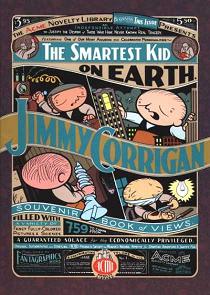Acme Novelty Library
| Acme Novelty Library | |
|---|---|

Cover of Acme Novelty Library No. 1 by Chris Ware
|
|
| Publication information | |
| Publisher |
Fantagraphics (1–15) Self-published (16–current) |
| Format | Ongoing series |
| Publication date | 1993–present |
| Number of issues | 20 (Plus a special folio issue) |
| Creative team | |
| Writer(s) | Chris Ware |
| Artist(s) | Chris Ware |
Acme Novelty Library is a comic book series created by Chicago cartoonist Chris Ware. Its first issue appeared in 1993. Published from 1994 by Fantagraphics Books and later self-published, it is considered a significant work in alternative comics, selling over 20,000 copies per issue.
Acme Novelty Library has adopted numerous formats in the course of the series and, similarly, doesn't feature a continuous cast of characters. It has showcased early Ware comics, such as Quimby the Mouse from The Daily Texan, and more recent strips from NewCity, a Chicago weekly paper.
Ware's first major graphic novel, Jimmy Corrigan, the Smartest Kid on Earth, was originally serialized in Acme Novelty Library between 1995 and 2000. Jimmy Corrigan is the saga of a lonely childlike man and his alienated ancestors, partly inspired by Ware's hopeful but unhappy reunion with his absentee father. The collected edition was released to much acclaim, winning the Guardian First Book Award, amongst others.
Rusty Brown and Building Stories began serialization in issue 16. With this issue, Ware also began to self-publish the title, with Fantagraphics and later Drawn & Quarterly acting as distributor. When asked why he chose to self-publish Ware stated:
Well, it's for a complicated variety of reasons, but mostly it was because I realized a year or two ago that I simply wasn’t really inspired to do it any more, and when I imagined taking over every aspect of it myself, I was suddenly inspired, almost anxious, to work on it again. In short, it just feels a little more like "art" to me now, since I’m responsible for everything that goes into it, and there’s no one to blame but myself if it's awful...
Issues are imbued with the defining characteristics of Ware's work; a pervasive sadness and nihilism permeate tales of disappointment, thwarted affection, and the dehumanization of the individual in a modern and mechanized world. Through the use of apparently extraneous novelties, such as cut-outs and flip-books, and prose parodies set in tiny fonts, Ware blurs the boundaries between author/reader/character. These interventions offer complex and simultaneous multilinear readings of the page that serve to thematise Ware's engagement with issues of narrative and continuity.
...
Wikipedia
